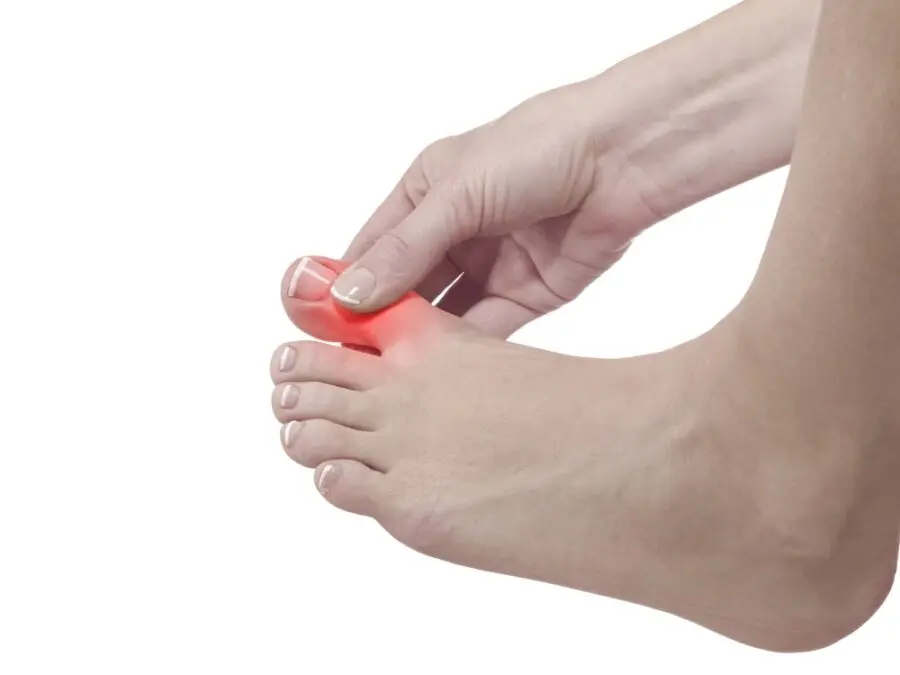
Gout is a form of arthritis that is particularly sensitive to metabolic changes.
It can prove difficult to predict when gout will strike, seeing as this inflammation of the joints comes and goes of its own accord. But do not despair!
There are some easy remedies that you can use at home to mitigate the inflammation and relieve the pain.
Here are 4 home remedies for the prevention and treatment of gout in the foot.
1. Watch your diet
If you experience a gout attack, you should consider it as a serious dietary warning.
This joint problem is a direct consequence of high levels of uric acid in the blood, so make sure to avoid foods high in purines.
The following foods and drinks are particularly rich in purines and should be consumed in moderation:
- Red or processed meat;
- Some seafood, namely: crabs, lobsters, and oysters;
- Oily fish (sardines, anchovies, and herring);
- Large quantities of alcohol (particularly beer);
- Soft drinks and juices that contain too much sugar;
- Anything made with corn syrup.
2. Halt weight gain
Along with curbing your intake of red meat, alcohol, and sugary foods, you can also lower your uric acid levels by maintaining a healthy weight.
Significantly reduce the likelihood of another gout attack by complementing a healthy, low-purine diet with a moderate amount of physical activity.
Furthermore, weight loss also provides other benefits, like reducing your risk of cardiovascular disease.
3. Identify your sources of stress
High levels of stress can trigger gout in the foot.
Naturally, if you can recognize which circumstances result in increased stress, you will be able to better control it in the future.
Try to understand your stress and its underlying causes, and employ relaxation techniques in order to keep your tension at acceptable levels.
Here are some good ways to relieve stress:
- Breathing or visualization exercises;
- Soothing music;
- Writing;
- Stretching, with particular attention to muscles around the painful joint;
- Yoga or meditation;
4. Apply heat and cold
Alternating between hot and cold is the best home remedy for relieving joint pain.
Usually, you can use ice to:
- Temporarily soothe the pain;
- Decrease blood flow around the pained joint;
- Reduce swelling.
Seeing as heat can aggravate the symptoms, it is advisable to apply cold rather than heat when treating a gout attack on the foot.
However, you can apply warm compresses to the foot once the inflammation is reduced.
Properly used, heat allows you to:
- Regain a full range of movement in your toes and your foot;
- Relieve the pain caused by the aftermath of the gout attack;
- Calm muscle spasms.
What to do when home remedies don’t solve the issue?
If you’ve tried everything and still can not relieve the pain of gout in the foot, you may have to see your podiatrist.
The podiatrist will be able to determine the nature of your pain and suggest the best medical treatment for your situation.
Most often, the podiatrist will resort to the following remedies for gout of the big toe or foot:
- Nonsteroidal anti-inflammatory drugs (NSAIDs);
- Cortisone injections;
- Orthotics to let the joint rest.
If needed, the podiatrist may direct you to your doctor in order to pursue a pharmaceutical treatment.
PiedRéseau: long-term relief for your joint pain
Home remedies and natural treatments can sometimes prove to be beneficial, but if you experience recurrent gout attacks, you should seek out professional help.
PiedReseau podiatry clinics have the expertise to treat this issue quickly and efficiently.
Don’t wait for gout to cause permanent damage: contact a PiedRéseau podiatrist today.